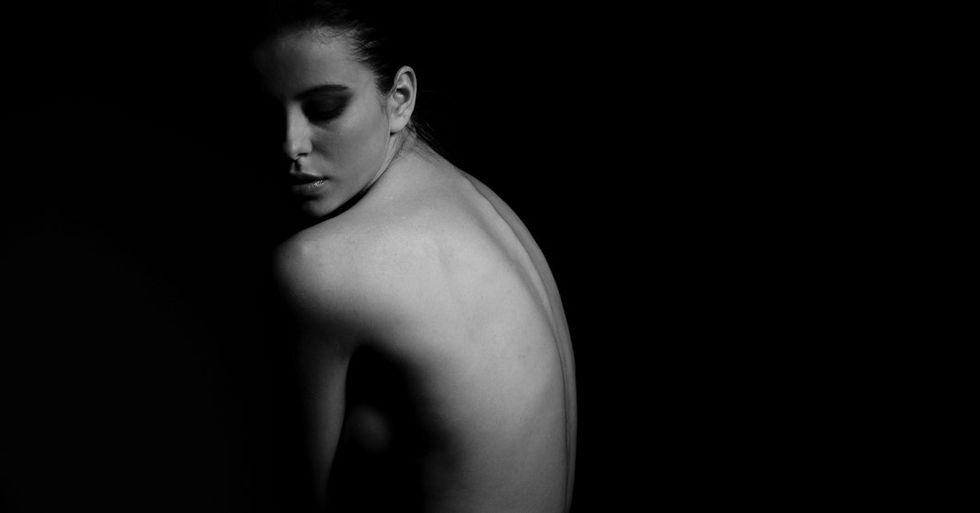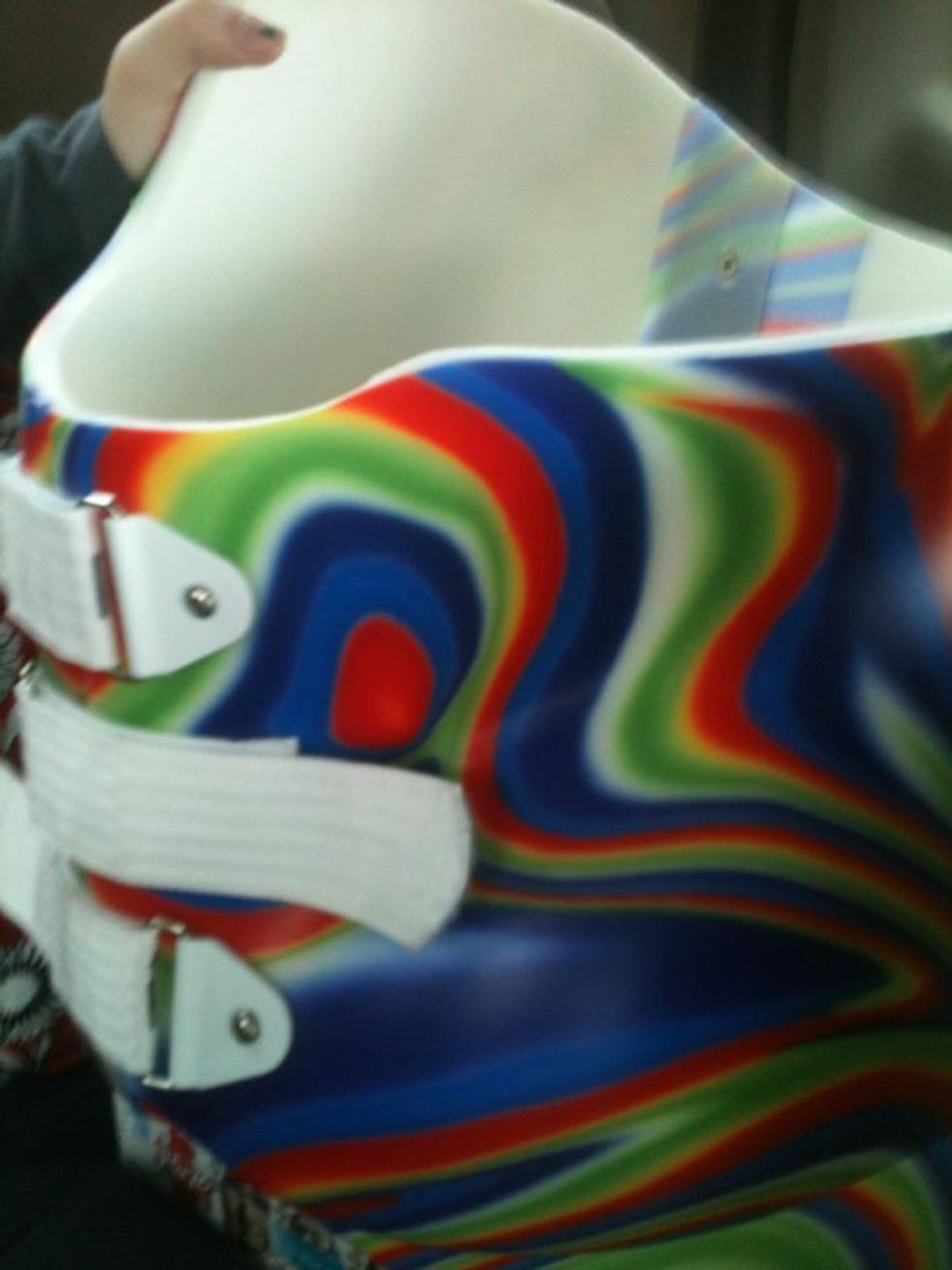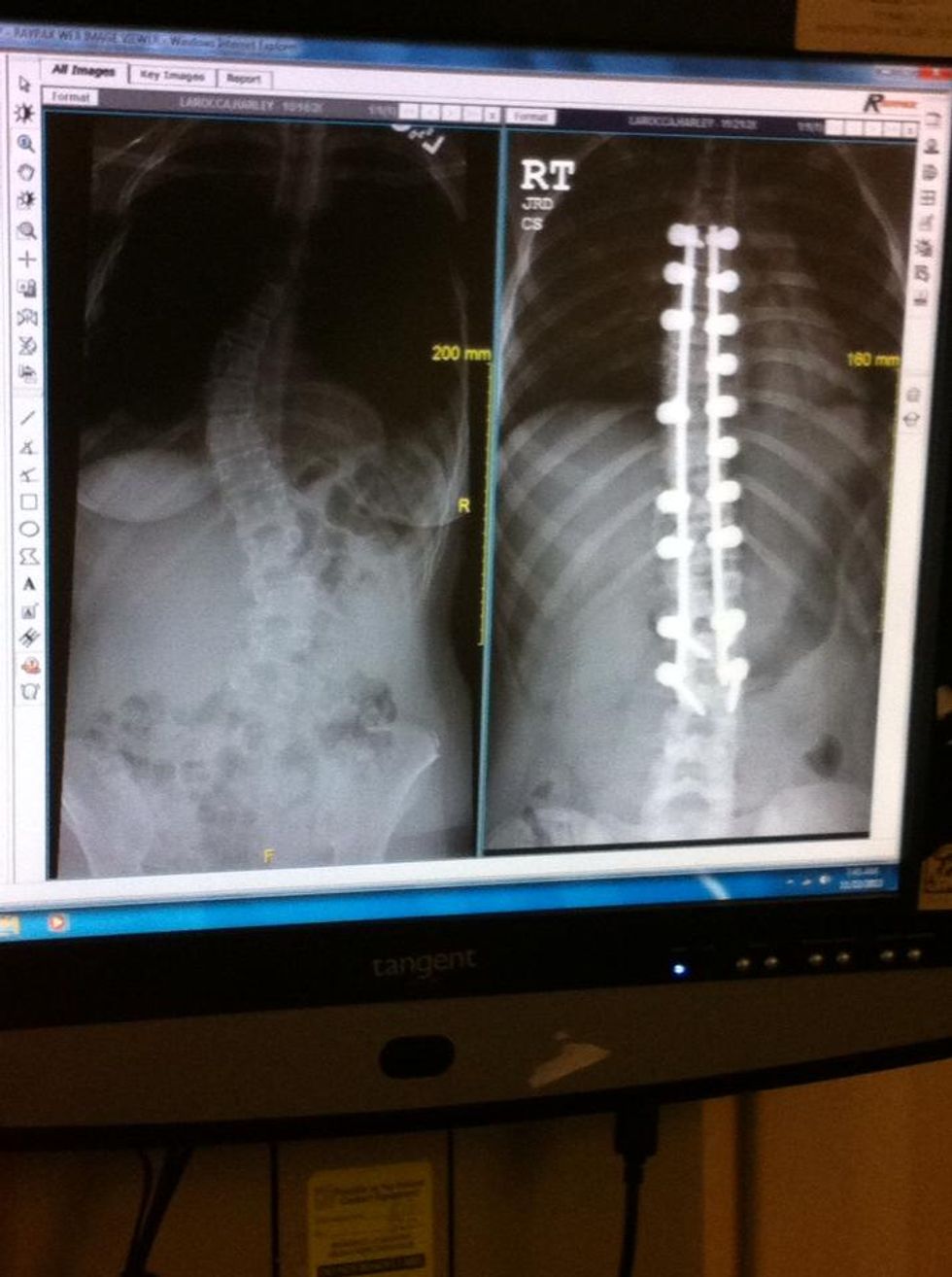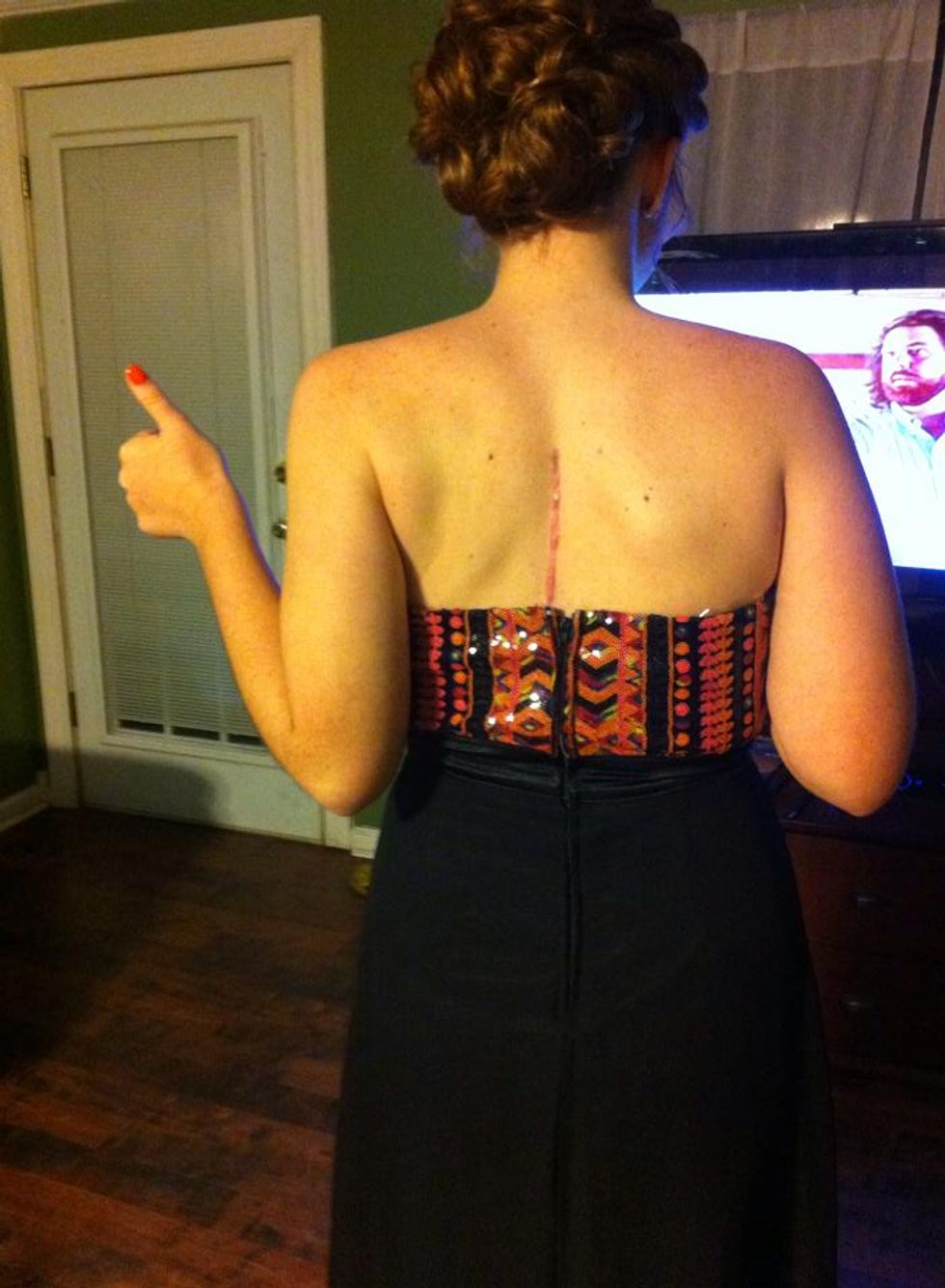If you're reading this right now I'm sure you either have scoliosis, know someone who has it, had it, or are just curious as to what it is and how it affects people. Scoliosis is an invisible illness with no certain cause. There are cures, but for now, there is no definite answer as to why it occurs.
My scoliosis story is pretty similar to most people's. It all started in 6th grade when I was in PE and the school nurse came in with a weird tool used to detect a curve in the spine. One by one we all had to line up, put our hands and feet together, and bend over so she could pass the tool over our spines. Of course, everyone ahead of me was one and done, but when she got to me things were different.
After the first time, she asked me if she could go over me again. Of course, I didn't think anything of it until later that day when I was called into her office. She sat me down and told me she detected a minor curve so she would be referring me to an orthopedic surgeon in town.
At my appointment with this doctor, my x-rays did show one curve measuring approximately 32 degrees. At this point, Dr. Fitter said he would refer me to the New Orleans Children's Hospital so I could see a pediatric orthopedist since he generally didn't treat young patients with scoliosis and I would get better care and help from them. From that day on, my life was completely different.
My first appointment at CHNOLA was in January 2012, I was only 11 years old and honestly didn't know what I was getting myself into. I was scheduled to take more x-rays, and then to see my new doctor, Dr. Accousti. During this appointment, Dr. Accousti confirmed what we had been told, I did indeed have scoliosis. This diagnosis was a bit difficult for my dad to handle; since he had it at my age also, he felt as though it was his fault I ended up with it. While yes it is genetic, nothing he did cause me to have this invisible illness.
Dr. Accousti explained that my curve definitely was not severe enough for surgery, and our first treatment method would be a corrective brace. I'd wear it 7-8 hours a night while I slept, and this would hopefully stop the curve from progressing. At the brace center of the hospital, I was measured, picked my pattern, and would come back in two weeks for a fitting.
After 6 months in the brace, I had another appointment with Dr. Accousti to check whether or not bracing was actually working. Unfortunately, it wasn't. I believe the brace wasn't working because I was losing weight very quickly, therefore it didn't fit the way it did initially. The brace was adjusted again to my new size, and I was set to come back in another six months.
Shocker, at this appointment we just got more bad news. The brace still wasn't working, I was still losing weight and growing out of the brace's size, and to add to it all, I now had a second curve in my spine. This meant getting fit for yet another brace (on the upside I got to pick another new pattern) and yet again come back in six months to have more x-rays to check my progression.
At this point, if you're still reading, I bet you can guess what happens next. Another appointment, more bad news. I continued to lose weight and continued to need a resize in my brace. Not to mention the fact that my curves were still getting worse. I think at this time my curves were at about 40 and 43 degrees each. Dr. Accousti was still insistent I keep wearing the brace. My curves still weren't at surgery point and he was hoping the curves would just stop growing.
By the next appointment, nothing changed. The brace still wasn't doing the job we had all hoped it would do. Now, it was time to discuss surgery. I was in high spirits that surgery was my best option. It wouldn't change anything about me besides the fact that I would be upright all the time. I was fully confident in this option and from that day on we scheduled both my surgery and pre-op appointments.
If you've been keeping up with the timeline it is now November of 2013. I spent two years bracing in an attempt to correct my scoliosis and it just wasn't happening. My pre-op x-rays showed my curves to be 43 and 45 degrees at the beginning of the month. Two weeks later, November 21, 2013, (also known as my scoliosis anniversary date) these curves were now at 45 and 47 degrees. When I heard this, I was even more assured surgery was the right choice.
When I woke up from surgery I was still the same person, just a little bit taller and in a lot more pain. Nothing felt different until they made me sit up; that's when I realized my life changed. Walking was even more of a task because I had to learn to do it all over again.
Going back to school after 6 weeks was different, but not impossible. There were certain things I couldn't do. Certain things I needed other people to do for me. That aspect was hard for me to swallow. I didn't want to have to depend on other people to do things for me.
Fast forward to now. It's senior year and just by looking at me I am no different from anyone else, besides having a little better posture. I went to my last appointment as a patient at CHNOLA in November and was fully released. Throughout high school, I was extremely involved with swim team and band and had no problems doing anything I set my mind to doing.
Scoliosis did nothing to discourage me from being the person I was before my diagnosis.
It did, however, encourage me to find a career choice, but that's a different story.
My journey may be completely similar to ones you've heard before, or it could be totally different. Scoliosis is a part of me I will never want to change. It made me the person I am today, and throughout it all, I had high spirits. The best way to conquer something is to believe it won't conquer you.
A photo from 3 months post-op



















